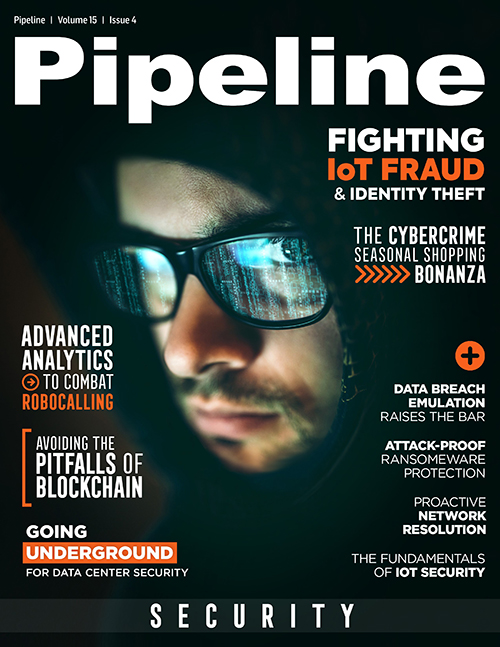Cyberthreats that operators' customers will be facing during the holidays
By: Itay Yanovski

As consumers forsake the mall in favor of Internet shopping, retailers are becoming increasingly reliant on their telecom providers to maintain their growing online footprint. But as the shopping season approaches, online retailing’s growth is threatened by a seasonal tsunami of cybercrime.
With cyberattacks on online retailers—including those who also maintain a brick and mortar presence—roughly doubling every year, retailers should be doing all they can to protect their customers as never before. As retailers expect to make roughly 40 percent of their annual sales during this period and consumers are doing an increasing proportion of their shopping online, this year offers cybercriminals a richer harvest than ever before.
While the retailers have been stocking their shelves with Christmas goods, the cybercriminals have been improving and sharing their already expert online hacking techniques—going through the operators’ infrastructure, of course.
These attacks include directly inserting malicious code into retailers’ websites using a form of malware known as “scrapers” or “skimmers” to exploit weakness in the code behind the payment processing pages. This was the form of attack used in the recent cyberattacks on British Airways (BA), which compromised the payment card details of 380,000 online customers. During this type of attack, the consumer is unable to detect anything unusual when finalizing a compromised transaction.
Other new techniques that have been perfected by the cybercriminals since last year include “domain jacking.” One in four Fortune 500 companies—including IT giants such as Microsoft and Apple—currently hold sub-domains that are sufficiently insecure as to be open to attacks from threat actors orchestrating a new cyber scam known as “domain jacking.” A staggering 236 million users visit the abandoned sub-domains of 96 percent of Fortune 500 companies on a daily basis, which means these consumers are vulnerable to orchestrated phishing attempts by threat actors. These consumers can also be directed to spoof ads or other promotional campaigns, exposing major retailers to brand damage and potential lost customer confidence in addition to financial loss.
In the run-up to what they hope will be a Christmas cybercrime bonanza, even relatively inexperienced and unskilled cybercriminals are currently filling their stockings with the kind of
off-the-shelf malware designed to bypass most retailers’ existing cyber defenses. Just as online retailing has evolved into a global industry worth almost three trillion dollars a
year, so cybercrime has also evolved into a highly modern industry.
Under cover of the Dark Web, cybercriminals can use cybercrime-as-a-service software, which offers thoroughly tested off-the-shelf products. Sometimes the cybercriminals also receive customer
support in the form of help desks and call centers. This effectively means that even relatively unskilled and novice hackers can now arm themselves with the latest cybercrime tools.
This forms a growing challenge for retailers and their service providers if they are to protect consumers from fraud and identity theft over the shopping season.
To stop the cybercriminals from scotching the continued growth of e-commerce and online shopping, there needs to be a cross-industry awareness of the growing threat of crime in the digital age. This should encompass not only cybersecurity advisers and online retailers but also the telecoms operators who supply the online infrastructure that powers the continued growth in Internet shopping.
For example, a joint investigative venture conducted earlier this year by CyberInt and Check Point uncovered a recent form of off-the-shelf malware: the [A]pache Next Generation Advanced Phishing Kit on the Dark Web, described as a fifth-generation level kit. The kit is relatively expensive, retailing for between $100 and $300, compared to the $20 or $50 most kits sell for, but for the price, [A]pache delivers what the researchers called one of the most advanced phishing kits yet spotted.
The [A]pache next-generation phishing kit provides threat actors of all kinds with a full suite of tools to carry out their attacks. These include an entire back-office interface with which they can create convincing fake retail product pages and manage their campaigns. This includes having their own versions of sites including Walmart, Americanas, Ponto Frio, Casas Bahia, Submarino, Shoptime, and Extra. With this year’s seasonal shopping spree expected to be well over a trillion dollars, the [A]pache kit is likely pay for itself many times over in the hands of criminal users.



















